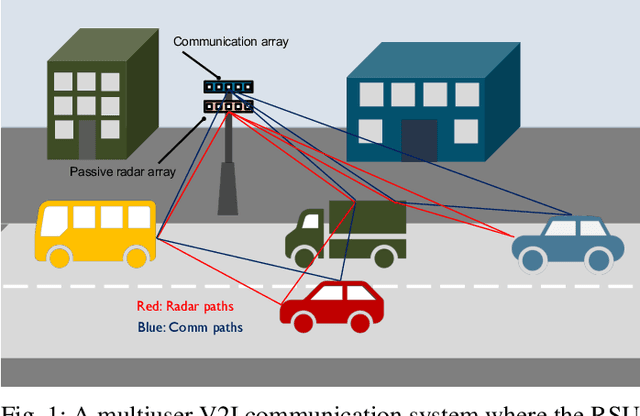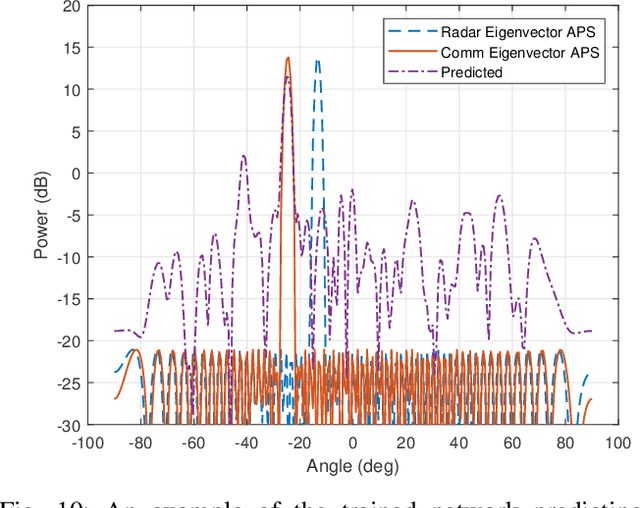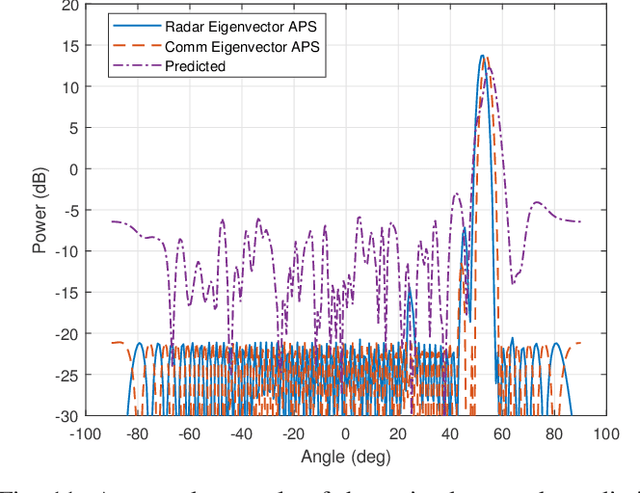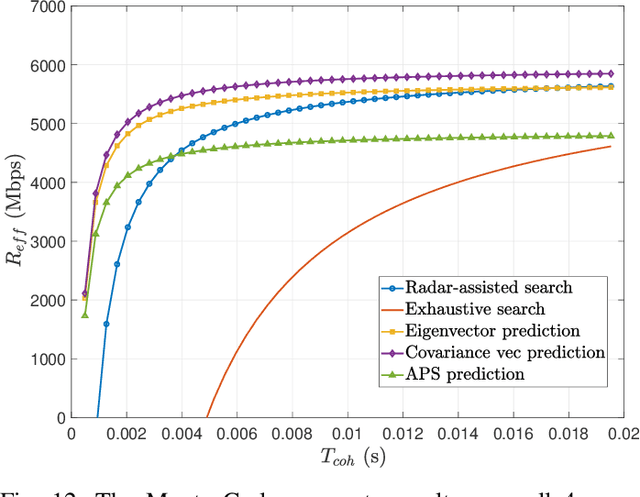Andrew Graff
Purposeful Co-Design of OFDM Signals for Ranging and Communications
Sep 06, 2023Abstract:This paper analyzes the fundamental trade-offs that occur in the co-design of orthogonal frequency-division multiplexing signals for both ranging (via time-of-arrival estimation) and communications. These trade-offs are quantified through the Shannon capacity bound, probability of outage, and the Ziv-Zakai bound on range estimation variance. Bounds are derived for signals experiencing frequency-selective Rayleigh block fading, accounting for the impact of limited channel knowledge and multi-antenna reception. Uncompensated carrier frequency offset and phase errors are also factored into the capacity bounds. Analysis based on the derived bounds demonstrates how Pareto-optimal design choices can be made to optimize the communication throughput, probability of outage, and ranging variance. Different signal design strategies are then analyzed, showing how Pareto-optimal design choices change depending on the channel.
Deep Learning-based Link Configuration for Radar-aided Multiuser mmWave Vehicle-to-Infrastructure Communication
Jan 12, 2022



Abstract:Configuring millimeter wave links following a conventional beam training protocol, as the one proposed in the current cellular standard, introduces a large communication overhead, specially relevant in vehicular systems, where the channels are highly dynamic. In this paper, we propose the use of a passive radar array to sense automotive radar transmissions coming from multiple vehicles on the road, and a radar processing chain that provides information about a reduced set of candidate beams for the links between the road-infrastructure and each one of the vehicles. This prior information can be later leveraged by the beam training protocol to significantly reduce overhead. The radar processing chain estimates both the timing and chirp rates of the radar signals, isolates the individual signals by filtering out interfering radar chirps, and estimates the spatial covariance of each individual radar transmission. Then, a deep network is used to translate features of these radar spatial covariances into features of the communication spatial covariances, by learning the intricate mapping between radar and communication channels, in both line-of-sight and non-line-of-sight settings. The communication rates and outage probabilities of this approach are compared against exhaustive search and pure radar-aided beam training methods (without deep learning-based mapping), and evaluated on multi-user channels simulated by ray tracing. Results show that: (i) the proposed processing chain can reliably isolate the spatial covariances for individual radars, and (ii) the radar-to-communications translation strategy based on deep learning provides a significant improvement over pure radar-aided methods in both LOS and NLOS channels.
Radar Aided mmWave Vehicle-to-InfrastructureLink Configuration Using Deep Learning
Nov 16, 2021



Abstract:The high overhead of the beam training process is the main challenge when establishing mmWave communication links, especially for vehicle-to-everything (V2X) scenarios where the channels are highly dynamic. In this paper, we obtain prior information to speed up the beam training process by implementing two deep neural networks (DNNs) that realize radar-to-communication (R2C) channel information translation in a vehicle-to-infrastructure (V2I) system. Specifically, the first DNN is built to extract the information from the radar azimuth power spectrum (APS) to reconstruct the communication APS, while the second DNN exploits the information extracted from the spatial covariance of the radar channel to realize R2C covariance prediction. The achieved data rate and the similarity between the estimated and the true communication APS are used to evaluate the prediction performance. The covariance estimation method generally provides higher similarity, as the APS predictions cannot always capture the mismatch between the radar and communication APS. Compared to the beam training method which exploits directly the radar APS without an attempt to translate it to the communication channel, our proposed deep learning (DL) aided methods remarkably reduce the beam training overhead, resulting in a 13.3% and 21.9% rate increase when using the communication APS prediction and covariance prediction, respectively.
 Add to Chrome
Add to Chrome Add to Firefox
Add to Firefox Add to Edge
Add to Edge